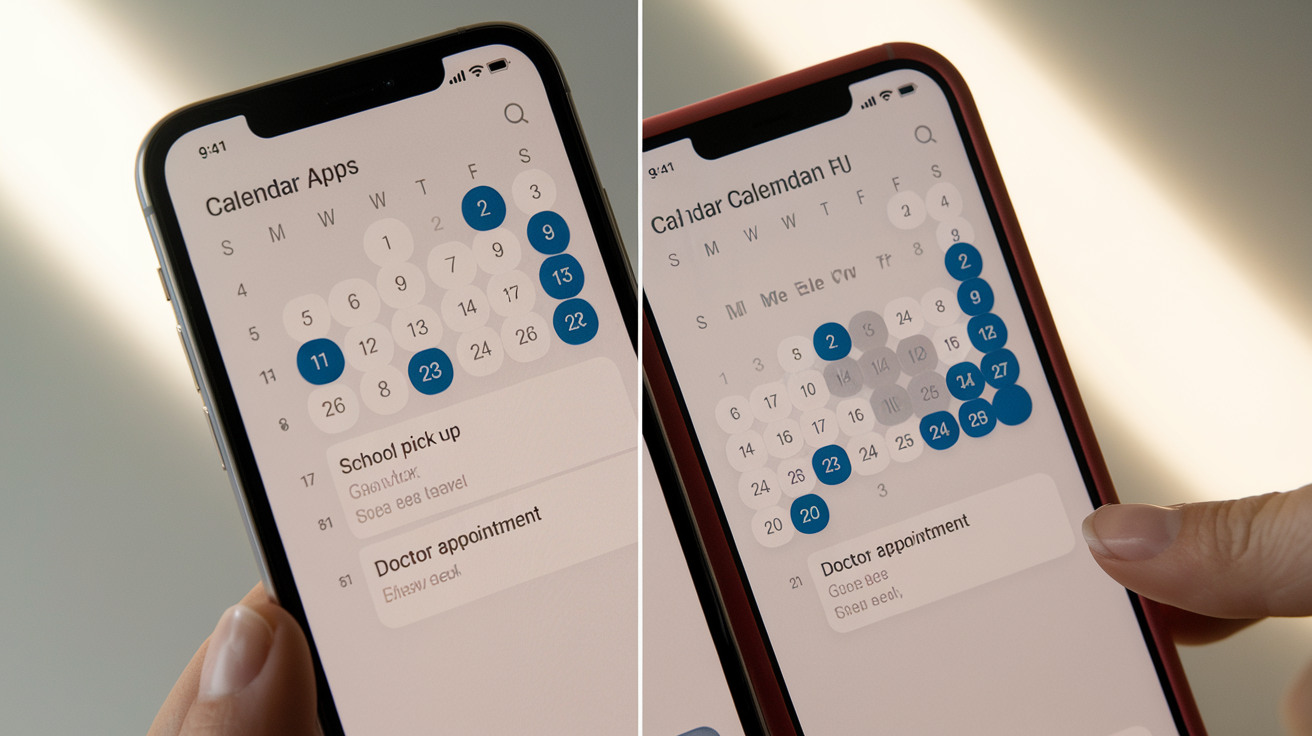
New Years Resolution: Improved Communication with Co-Parent
As the clock strikes midnight and we welcome a new year, many make resolutions to improve various aspects of our lives. However, one resolution can make a difference for co-parents: improving communication with their co-parents.
Are you tired of misunderstandings, conflicts, and stress when coordinating with your ex about your children? Do you dread every interaction, wondering if it will become an argument? It’s time to break this cycle and create a more harmonious co-parenting relationship. By focusing on effective communication, you can transform your co-parenting experience from a source of frustration to a collaborative partnership that benefits everyone involved, especially your children.
This blog post will explore seven key areas to help you achieve your New Year’s resolution of improved co-parent communication. From understanding the importance of effective dialogue to implementing practical strategies and leveraging technology, we’ll guide you through creating a more positive and productive co-parenting relationship. Let’s dive in and discover how you can make this year the turning point in your co-parenting journey!
Understanding the Importance of Co-Parenting Communication

A. Impact on children’s well-being
Effective co-parenting communication is crucial in shaping children’s emotional and psychological development. When parents maintain a respectful and collaborative relationship, children feel secure and loved, regardless of the family structure. This stability allows them to focus on their personal growth, academic pursuits, and social relationships without parental conflicts.
B. Reducing stress and conflict
Improved communication between co-parents significantly reduces stress and conflict for all parties involved. Parents can avoid misunderstandings and minimize tensions by establishing clear communication channels and addressing issues proactively. This positive approach creates a more harmonious environment, benefiting both the parents and the children.
C. Creating a unified parenting approach
When co-parents communicate effectively, they can develop a consistent and unified approach to parenting. This alignment in parenting styles, rules, and expectations gives children a sense of predictability and structure across both households. A unified front also reinforces respecting both parents’ roles in the child’s life, fostering a healthy family dynamic.
Effective communication sets the foundation for a positive co-parenting relationship, ensuring that the child’s best interests remain the top priority. As we explore ways to improve communication, assessing your current communication patterns with your co-parent is essential.
Assessing Current Communication Patterns

Now that we understand the importance of co-parenting communication let’s take a closer look at our current communication patterns. This step is crucial for identifying areas that need improvement and setting the stage for positive changes in the new year.
Identifying communication barriers
Communication barriers can significantly hinder effective co-parenting. These may include unresolved conflicts, misunderstandings, or even logistical issues. Take time to reflect on your interactions with your co-parent. Are there recurring problems that consistently derail your conversations? Perhaps you find it challenging to discuss specific topics without tension arising. Recognizing these barriers is the first step towards overcoming them.
Recognizing emotional triggers
Emotions play a significant role in co-parenting communication. Identifying what triggers negative emotional responses in both you and your co-parent is essential. These triggers could be specific words, topics, or tone of voice. By recognizing these emotional hot spots, you can work on developing strategies to navigate them more effectively, leading to more productive conversations.
Evaluating the effectiveness of current methods
Take a critical look at your current communication methods. Are they serving your co-parenting relationship well? Consider factors such as frequency, medium (e.g., in-person, phone, text, email), and content of your communications. Assess whether these methods are helping you achieve your co-parenting goals or if they’re contributing to misunderstandings and conflicts. This evaluation will help you determine which aspects of your communication need adjustment in the coming year.
Setting Clear Communication Goals

Defining shared parenting objectives
As we improve co-parenting communication, defining shared parenting objectives is crucial. Start by sitting together or having a virtual meeting to discuss your child’s needs and well-being. Focus on creating a united front for your child’s sake, even if you have personal differences. Identify key areas such as education, health, extracurricular activities, and emotional support where you need to be aligned. Remember, the goal is to provide your child a stable and nurturing environment.
Establishing boundaries and expectations
Clear boundaries and expectations are essential for effective co-parenting communication. Discuss and agree on what information needs to be shared, how often, and through which channels—set guidelines for respectful communication and avoiding criticism or blame. Establish rules for emergencies and decision-making processes. It’s also essential to define personal boundaries, such as respecting each other’s privacy and new relationships. By setting these expectations upfront, you can minimize misunderstandings and conflicts in the future.
Creating a communication schedule
To ensure consistent and effective co-parenting communication, develop a regular schedule for updates and discussions. This might include weekly check-ins via phone or video call, monthly in-person meetings, or daily text updates about your child’s activities. Consider using a shared digital calendar for important dates, appointments, and events related to your child. A structured communication schedule helps maintain consistency and ensures that parents are always informed about their child’s life and needs.
With these clear communication goals in place, you’ll be better equipped to navigate the challenges of co-parenting. Next, we’ll explore implementing effective communication strategies to enhance your co-parenting relationship further.
Implementing Effective Communication Strategies

Active listening techniques
Active listening is crucial for effective co-parenting communication. When engaging with your co-parent, focus on truly understanding their perspective. Please give them your full attention, maintain eye contact, and avoid interrupting. Reflect on what they’ve said by paraphrasing their words, which shows you’re genuinely listening and helps clarify any misunderstandings.
Using “I” statements
“I” statements are powerful tools for expressing your feelings without blaming or attacking your co-parent. Instead of saying, “You never follow the schedule,” try, “I feel frustrated when the schedule isn’t followed.” This approach reduces defensiveness and opens the door for constructive dialogue about co-parenting issues.
Practicing empathy and understanding
Empathy is key to improving co-parenting communication. Put yourself in your co-parent’s shoes and try to understand their viewpoint, even if you disagree. Acknowledge their feelings and experiences, which can help build trust and mutual respect. Remember, your shared goal is the well-being of your children.
Choosing appropriate communication channels
Select communication methods that work best for both you and your co-parent. Text messages might suffice for quick updates. For more complex discussions, schedule phone calls or in-person meetings. Consider using co-parenting apps to share schedules and important information. Whatever channels you choose, ensure they promote clear, timely, and respectful communication.
Now that we’ve explored effective communication strategies let’s examine how technology can further enhance your co-parenting efforts.
Utilizing Technology for Better Co-Parenting

Co-parenting apps and tools
Technology offers invaluable resources for improving co-parenting communication in today’s digital age. Specialized co-parenting apps like OurFamilyWizard, Coparently, and 2houses provide secure platforms for messaging, sharing information, and tracking expenses. These tools often include tone meters to encourage respectful communication and reduce conflicts. By centralizing communication, these apps create a clear record of interactions, which can benefit both parents and, if necessary, legal proceedings.
Shared calendars and schedules
Utilizing shared digital calendars is a game-changer for co-parents. Platforms like Google Calendar or Apple’s iCloud Calendar allow both parents to view and update schedules in real time. This transparency helps avoid misunderstandings about visitation schedules, school events, or extracurricular activities. By syncing these calendars with your smartphones, you’ll always have the most up-to-date information, ensuring both parents are on the same page regarding your child’s schedule.
Digital document storage for important information
Cloud storage services like Dropbox or Google Drive offer secure ways to store and share important documents related to your child. This can include medical records, school reports, and legal documents. Maintaining a shared digital repository gives both parents equal access to crucial information, reducing the likelihood of miscommunication or lost documents. This approach also ensures that important information is readily available in emergencies.
With these technological tools, you can streamline your co-parenting communication and create a more organized, transparent, and efficient co-parenting relationship. Next, we’ll explore how to handle disagreements constructively, an essential skill for maintaining a positive co-parenting dynamic.
Handling Disagreements Constructively

Focusing on the child’s best interests
When disagreements arise in co-parenting, it’s crucial to keep the child’s well-being at the forefront. Remember that your shared goal is to provide your child a stable and nurturing environment. Before engaging in any dispute, ask yourself: “How will this decision impact our child?” This perspective shift can help diffuse tension and guide you toward more constructive solutions.
Using problem-solving techniques
Approach disagreements as opportunities for collaborative problem-solving rather than confrontations. Employ techniques such as active listening, where you genuinely hear your co-parent’s concerns without interrupting. Use “I” statements to express your feelings without placing blame. For example, say, “I feel concerned about…” instead of “You always…” This approach fosters a more cooperative atmosphere and increases the likelihood of finding mutually agreeable solutions.
Seeking mediation when necessary
If you are at an impasse, don’t hesitate to seek professional mediation. A neutral third party can provide valuable insights and help you see the situation from new angles. Mediators are trained to facilitate productive discussions and guide you toward resolutions that serve your child’s best interests. Remember, seeking help shows strength and commitment to effective co-parenting.
By focusing on these strategies, you can transform potential conflicts into opportunities for growth and improved communication. This approach benefits your co-parenting relationship and provides a positive model for your child in handling disagreements.
Maintaining Consistency in Co-Parenting Communication

Regular check-ins and updates
Establishing a routine for regular check-ins and updates is crucial for maintaining consistency in co-parenting communication. Set aside time weekly or bi-weekly to discuss your child’s progress, upcoming events, and any concerns. These brief check-ins should cover essential topics such as school performance, extracurricular activities, and health issues. By staying informed, both parents can provide a united front and consistently meet the child’s needs.
Adapting to changing needs and circumstances
As children grow and family dynamics evolve, it’s important to remain flexible in your co-parenting approach. Be open to adjusting your communication methods and frequency to accommodate changing schedules or new challenges. This adaptability demonstrates your commitment to effective co-parenting and sets a positive example for your child. Regularly reassess your communication strategies and be willing to try new approaches if current methods are no longer effective.
Celebrating successes together
Acknowledging and celebrating your child’s achievements as a united co-parenting team can significantly boost your communication efforts. Share positive news about your child’s accomplishments, no matter how small, and express mutual pride in their growth. This practice reinforces your commitment to your child’s well-being and fosters a more positive co-parenting relationship. By focusing on shared joys, you can build a foundation of goodwill, making navigating more challenging aspects of co-parenting easier.

Effective communication with your co-parent is a powerful resolution that can transform your family dynamics and create a more harmonious environment for your children. By assessing your current patterns, setting clear goals, and implementing strategies like utilizing technology and handling disagreements constructively, you can pave the way for a more collaborative co-parenting relationship.
As you embark on this journey of improved communication, remember that consistency is key. Maintain your commitment to open, respectful dialogue throughout the year, and be patient with the process. Your efforts will benefit your relationship with your co-parent and provide a stable and supportive foundation for your children’s well-being. Make this resolution a priority, and watch as it positively impacts every aspect of your co-parenting experience.
Lass Law proudly supports the Vista community with a full range of legal services in divorce and family law. From helping clients with property division to establishing fair child support arrangements, their experienced attorneys deliver practical, compassionate legal solutions. For families seeking alternative options, Lass Law offers effective divorce mediation services. To begin working with a dedicated legal team, visit their contact page.









